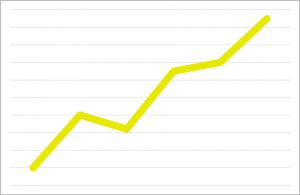 In the age of big data and analytics, why are so many companies still looking at clicks and submissions to measure performance? It’s most likely because they’ve lost sight of the bigger picture and the golden metric of marketing.
In the age of big data and analytics, why are so many companies still looking at clicks and submissions to measure performance? It’s most likely because they’ve lost sight of the bigger picture and the golden metric of marketing.
The goal of all marketing is to increase sales — even brand marketing, albeit longer into the future. That’s why the golden metric of marketing optimization is return on ad spend (ROAS).
For businesses with a quick consumer decision journey, like ecommerce sites, tracking this metric is quite simple. However, for companies with a lengthy sales cycle (particularly those lasting several months), the revenue is often distant from the cost, making it tough to track and even tougher to optimize. In these situations, projected return on ad spend (pROAS) predicted from the sales pipeline becomes the key metric.
Calculating ROAS
The first step is understanding your marketing expenses. You probably already have this through your marketing reports, but if not go through each channel and add up the media expenses. The second step is understanding your revenue. If you use a CRM, it most likely has a built-in field for revenue, but if it doesn’t, create a custom field in order to track on a per-customer basis. Once you know the expenses and revenue, it’s simple math: revenue / advertising expenses.
Hopefully it equals more than 1 (or 100%), otherwise you may want to take a hard look at what’s not working. Try taking it a step further and calculate at the customer level or even by tactic to evaluated the effectiveness of individual ads, content, and nurturing programs.
Tools to help
Manually calculating ROAS can be a time-consuming task, especially if you’re tracking across multiple channels. Thankfully, there are a few options that can help.
Google has released the beta of “Cost Analysis” in Google Analytics that let’s you to see visit, cost, and revenue performance data for your paid marketing channels. Unfortunately you have to manually upload cost data for channels other than AdWords and you have to set the revenue for defined, on-site conversions, so it’s not ideal for companies with a sales cycle.
If you have a sales cycle and use Salesforce, Bizible automatically calculates advertising ROI including projected ROAS based on your historical conversion rates in Salesforce.
Continue reading about ROAS, including how multi-touch revenue attribution can be involved, in my recent guide ROAS: The Golden Metric of Marketing.